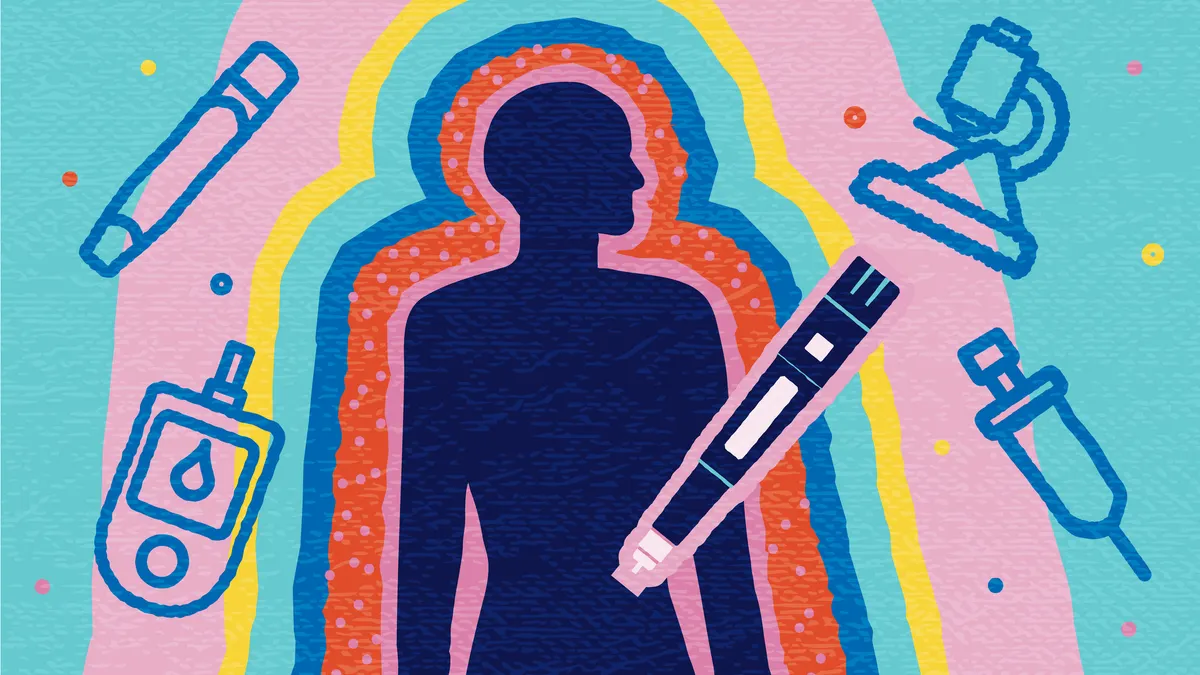"Long COVID" has been vexing to study on a large scale as healthcare researchers have struggled to streamline data and identify patterns — making it all the more difficult to develop treatments. A new collaboration between Stanford University and the health data software company Komodo Health could raise the level of understanding of long COVID — as well as disparities in care — by arming researchers with the intel to help demystify the sometimes life-altering condition.

Through Komodo's Sentinel application, Stanford researchers have access to de-identified health records of more than 330 million patients with an average history of six years for each one. For David Rehkopf, an epidemiologist and director of the Stanford Center for Population Health Sciences, the platform also allows his team to advance their own collection of real-world data.
Komodo's Sentinel software increases the amount of data the researchers have on hand, but the platform also allows them to see the patient journey over time, Rehkopf says. Initial studies have begun, but the researchers have not publicly committed to a timeline for results.
"We're really able to, in a dynamic way, look at what happens to people over their life course and over time," Rehkopf says. "That's been something that people have known would be important for a long time, to have more longitudinal data on patients to look at both short- and long-term outcomes."
The CDC estimated in June that of the 40% of adults who reported having COVID-19 in the past, nearly one in five currently still had symptoms of long COVID, which can include fatigue, fever, difficulty breathing, chest pain and neurological symptoms like headache and dizziness, among others. The NIH has also joined in the effort to further understand these lasting symptoms in a program called Recover, enrolling thousands of patients who volunteer to join the study.
"It's troublesome to see what the long-term burdens may be on the population," Rehkopf says, adding that symptoms can exacerbate chronic conditions and cause long-term disability. "It's one of those things where we really need to be acting right now and figuring out what we can be doing for patients."
One of the benefits of the Komodo platform is that the researchers can discover which treatments are working for patients and, just as importantly, which are not working. It also allows them to look at large groups of patient populations in categories — including those with diabetes or the immune-compromised, for instance — where traditional studies wouldn't be able to achieve the same volume on a categorical scale.
And with that volume comes an ability to project longer-term effects, uncovering patterns that couldn't be seen otherwise.
“Because we have broader data on more people we can start detecting those signals earlier," Rehkopf says.
All in the nuance
For Komodo, bringing their technology to Stanford's public health researchers allows them to uncover details about the lingering effects of the pandemic.

"We’ve all been impacted by COVID-19 in one way or another, but there is still so much we don’t know about the disease and how unique patient characteristics impact symptoms, treatment, care and more," Komodo's head of clinical development and real-world evidence Ivy Weng wrote in an email.
Like Rehkopf, Weng sees the value not just in more data, but in the detailed data points for every patient that can bring more insight into how different patients are affected by the disease. Algorithms powered by AI and machine learning add nuance about specific populations, recognize patterns in symptoms and outcomes and could lead to better treatment approaches, she says.
"Effective population health research on critical health issues requires access to high-quality data sources across the entire healthcare system, which has historically been siloed and fragmented," Weng says. "But on top of collecting the information itself, the 'secret sauce' lies in the ability to connect all this data together to construct a longitudinal view of the patient journey."
In fact, seeing the way COVID-19 interacts with chronic conditions has lit a fire under academia and health tech specialists to change how they conduct research.
"The speed with which COVID happened, and the magnitude of it, made me realize how we need tools and processes to quickly respond to both our current threats and emerging threats to health," Rehkopf says. "For me, I'm thinking about how academics can work more quickly, and have tools and infrastructure set up to find solutions for patients."
When the next pandemic looms, these tools can help send warning signals to the world.
"With the detail and richness and size of the data available combined with AI and machine learning, we're able to learn more about early signals," Rehkopf says. "Coming from a public health background, I'm very excited about the prospects for prevention."
For pharma companies making vaccines or drugs for an infectious disease like COVID-19, that specific information about how different patients respond to treatment could be invaluable and lead to better interventions.
"We know that immune system development and immune function varies markedly with age, for example, or [with] other chronic diseases," Rehkopf says. "And so it just allows us to make sure anything that's developed by the pharmaceutical industry is working well for everybody."
Spotlight on disparity
Data-driven insights could also inform government guidelines.
"It's about not relying on one-size-fits-all recommendations, but really having the statistical power, the sample size, the evidence to talk about what would be working best for whom," Rehkopf says. "In the long run, we can be providing much more nuanced data for physicians that's not just biological but also in relation to social background as well."
Disparity in healthcare among social groups has been clearly shown during the pandemic, and Rehkopf says inequality is "one of the huge important challenges we have." Real-world data is one way of addressing those needs.
"By documenting and clarifying groups in the population who are missing out from treatments, we can have guidelines and suggestions to make changes — documenting those differences is a first step," Rehkopf says. "And then we can use that documentation to problem solve and say, how can we address those inequities?"
The data parsed out by Komodo's technology could provide that evidence, Weng says.
"Stepping beyond the technology itself, the past two and a half years have surfaced a critical, long-overdue conversation about health equity," Weng says. "From our vantage point, the path to health equity begins with a solid understanding of gaps in care for historically underserved patient populations."





















